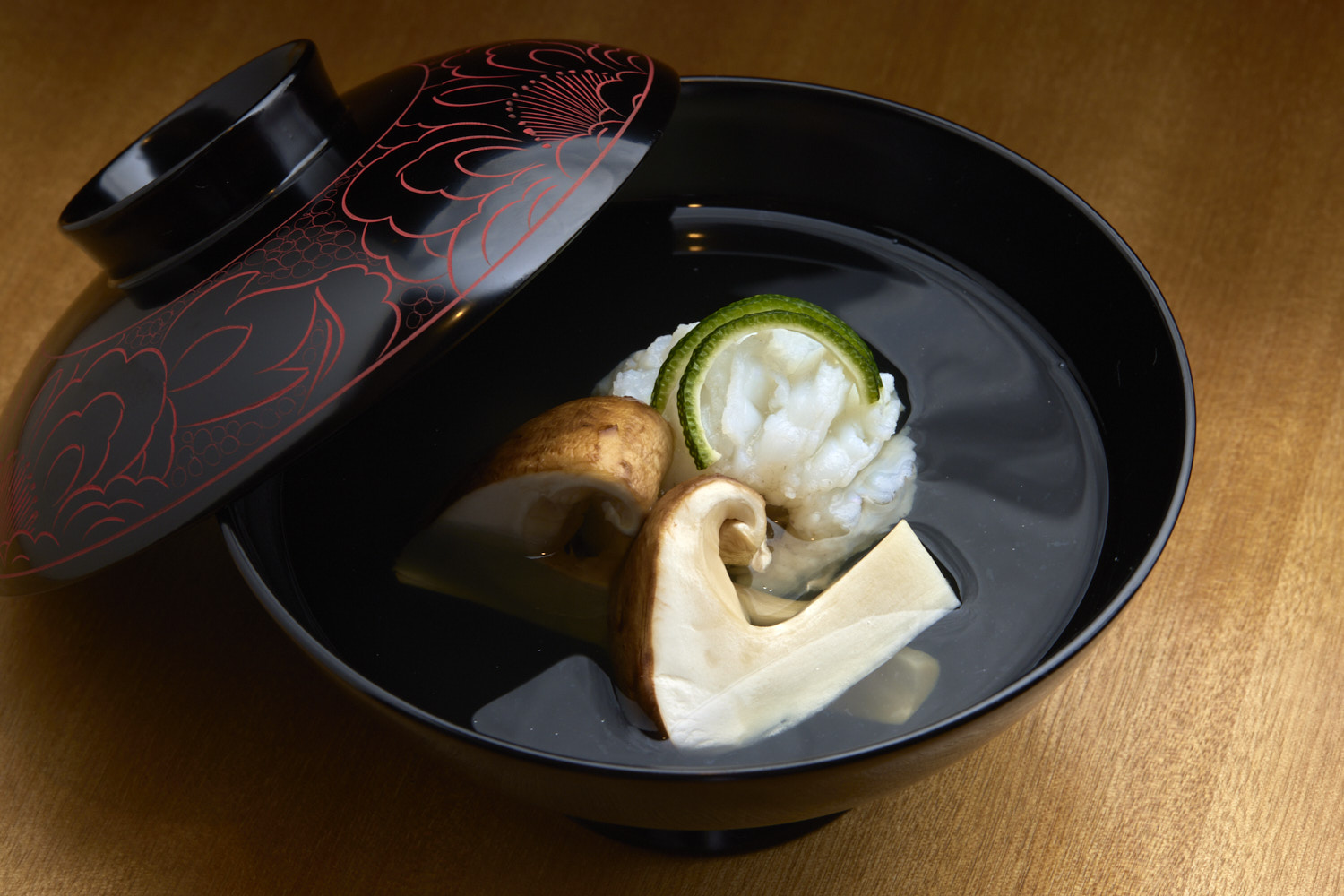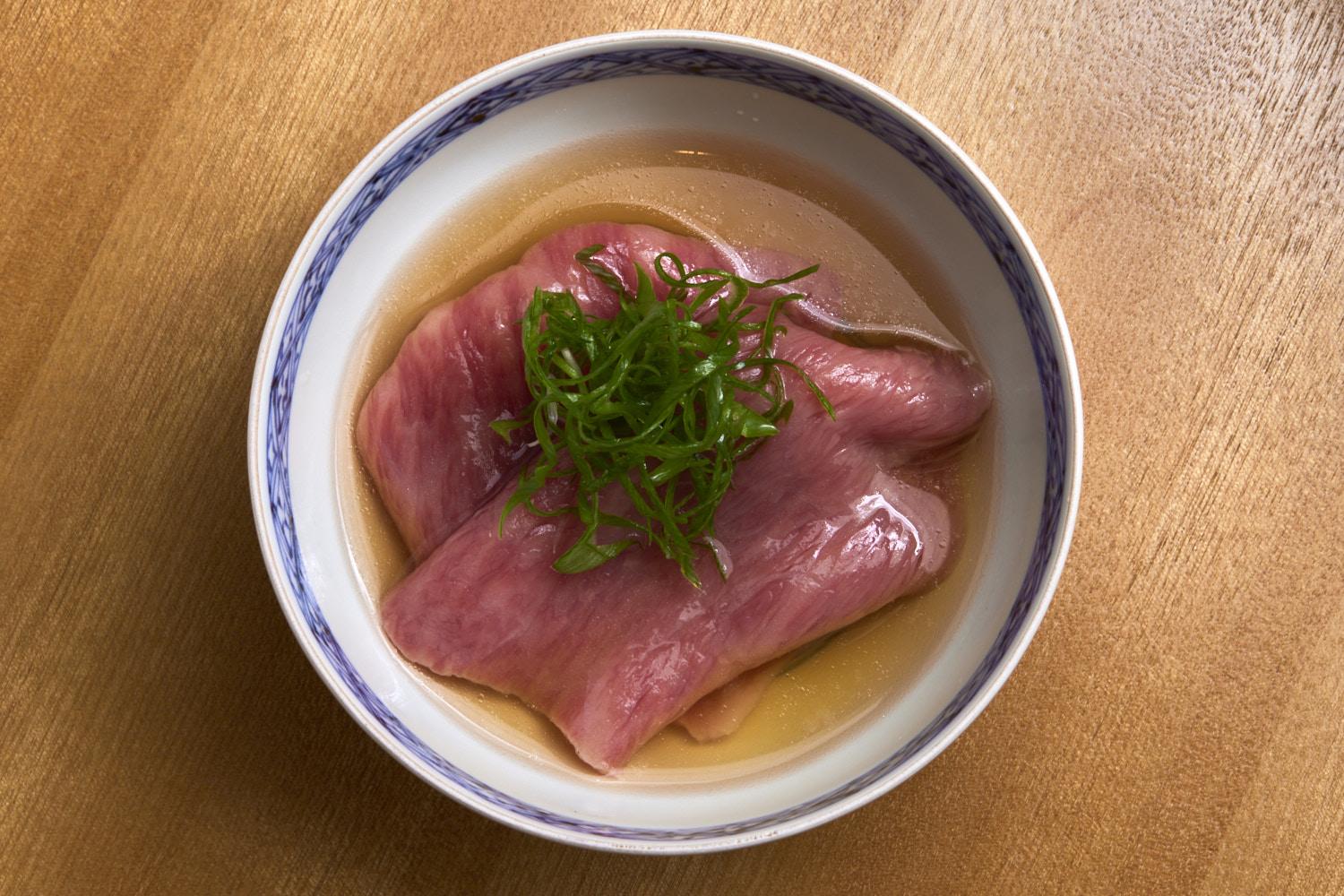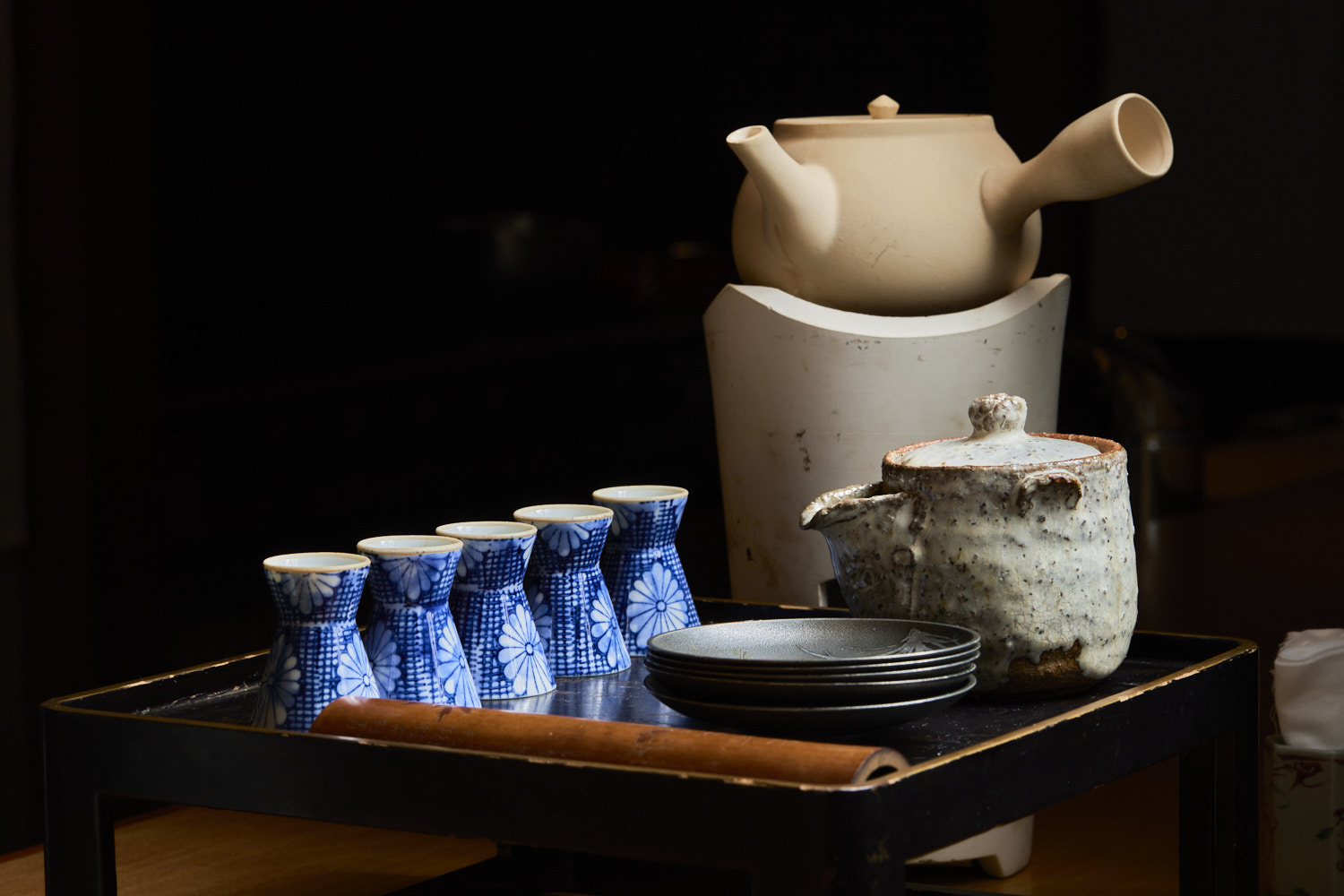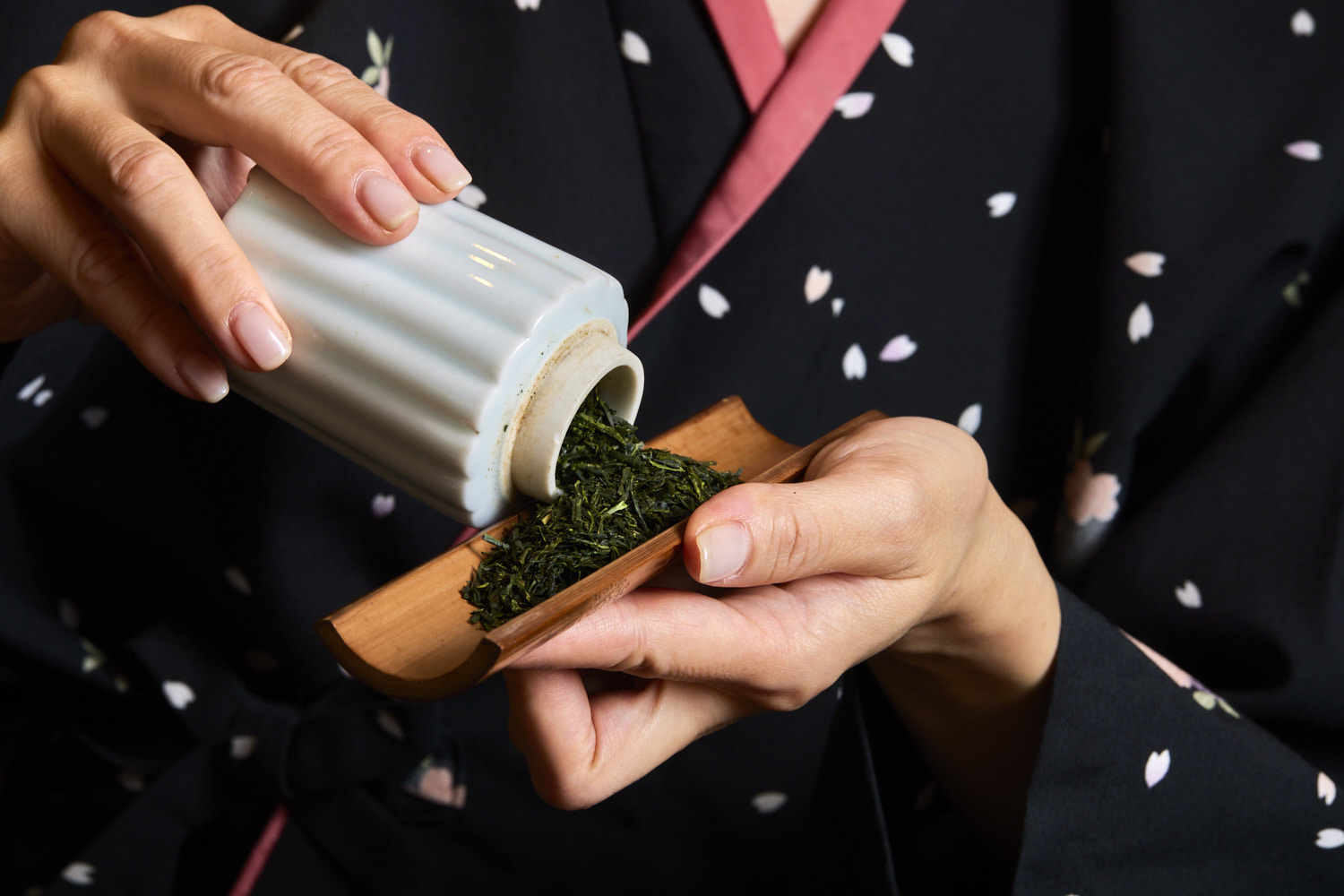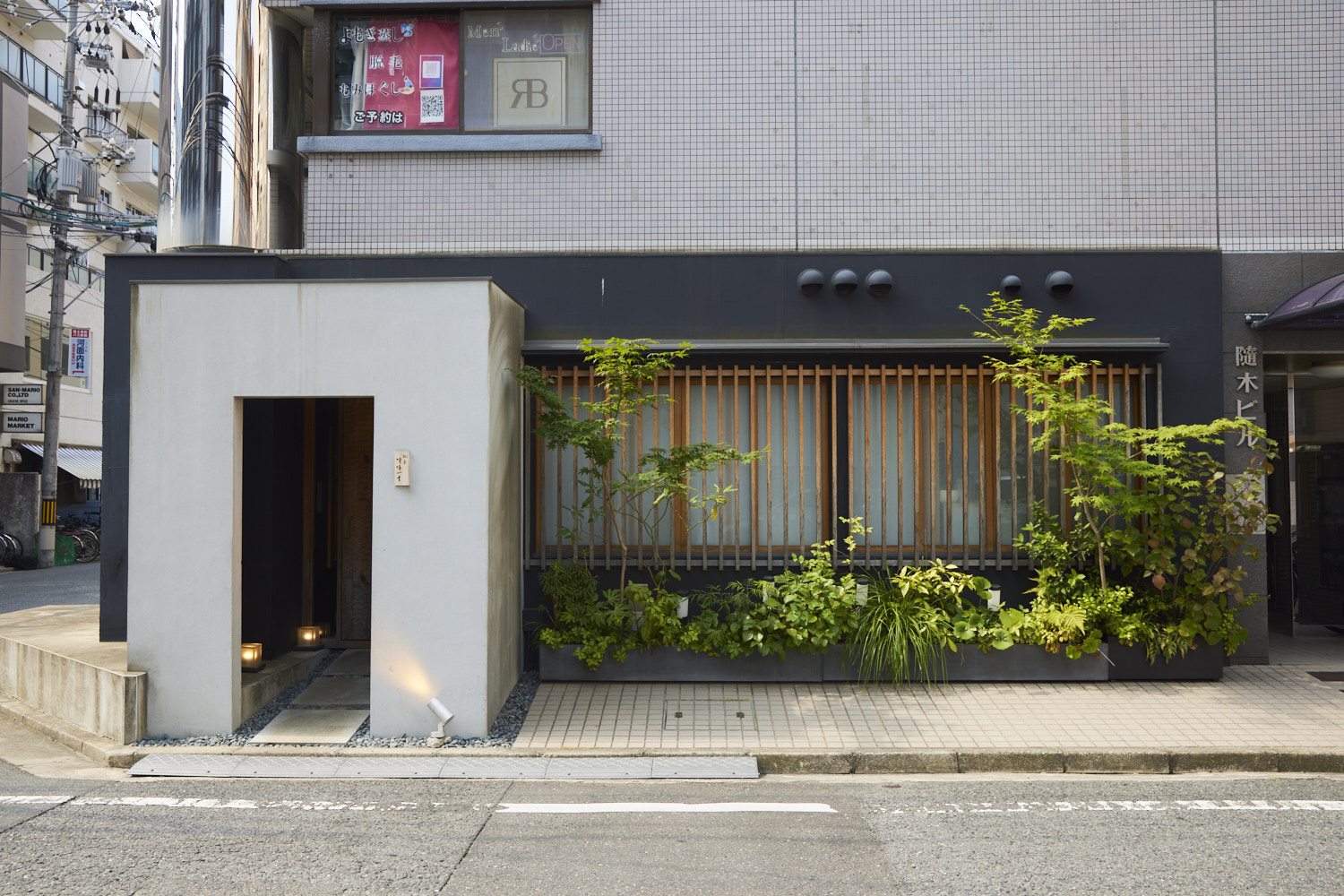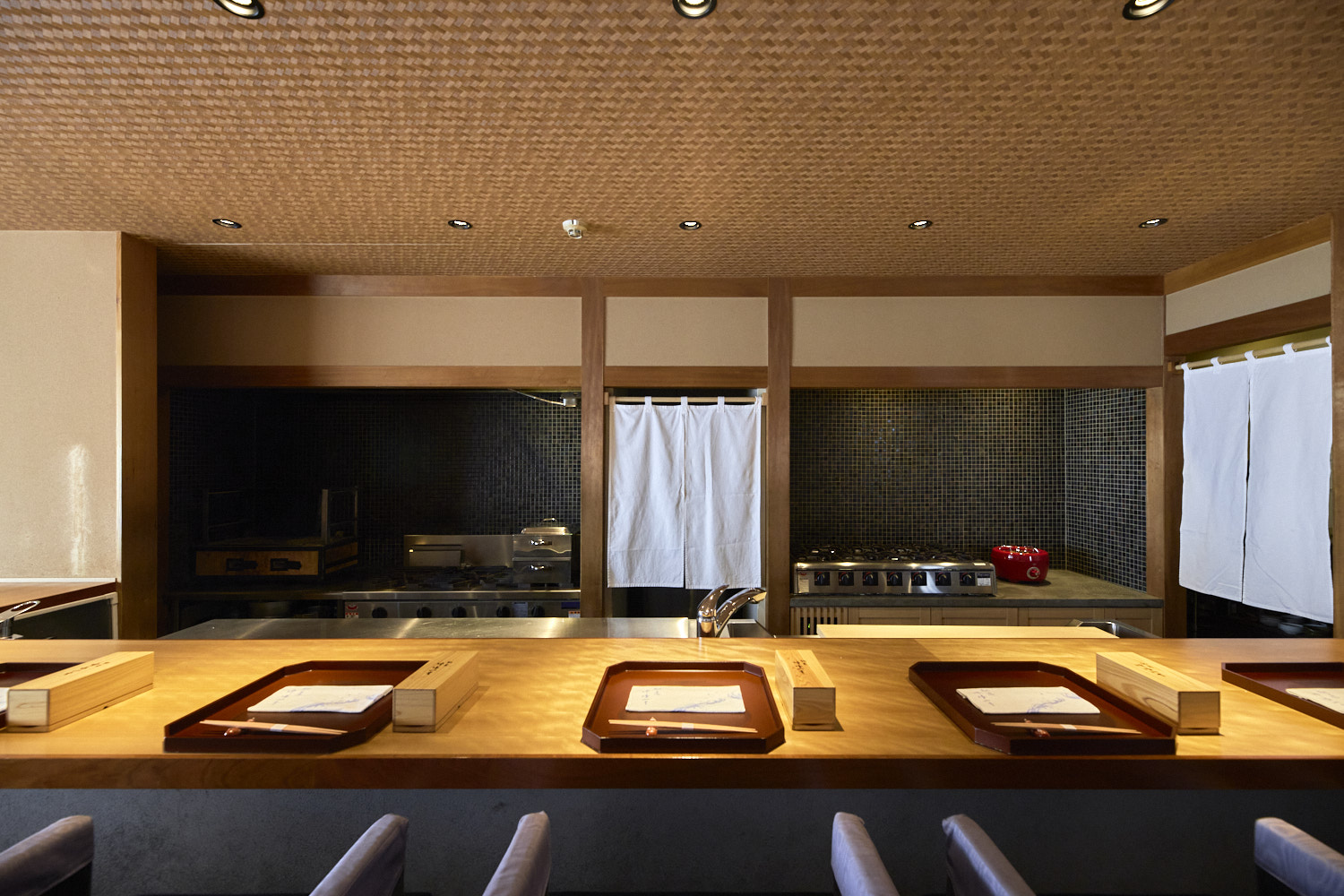
Hiroshima
Chisou Sottakuito
馳走 啐啄一十
Dressed in a kimono with the sleeves neatly tied up, Chef Hisama Hirano stands behind his counter at Chisou Sottakuito to serve a heartfelt meal that reflects his deep appreciation for the Japanese approach. Drawn to the purity of Hiroshima’s spring water, he builds his menu on dashi, the essence of Japanese flavors. Paired with an excellent sake menu, the result is a memorable omakase where every dish highlights the region’s seasonal ingredients, infused with rich and fragrant umami.
A short car ride from Hiroshima Station, the restaurant stands on a quiet street corner, marked by a nameplate inscribed in calligraphy by Hirano himself. Inside, a beautiful wooden counter stretches across the room, set with just nine seats. A charcoal grill is set up within arm’s reach, allowing guests to enjoy the crackling and aroma of the embers as they wait for the meal.
The name, Chisou Sottakuito, weaves together Hirano’s philosophy about hospitality. Borrowing from Zen expressions, Chisou refers to the act of seeking out exceptional ingredients far and wide for one’s guests. Sottaku describes the moment when a chick is hatching out of its egg, which Hirano sees as a metaphor for his encounter with his guests, and also with his apprentices. He, together with his English-speaking team, is committed to serving every guest with great attention.
The experienced sommelier, Rie Kimura, curates an exceptional sake menu that complements the chef’s seasonal cuisine. Highlighting the work of local breweries such as Enoki, Morikawa and Miwa, she leans towards junmai bottles that are rich and savory. She treats sake as a living product by aging unpasteurized bottles or blending them to create new flavors. She also offers a separate menu devoted entirely to Aramasa Brewery, a cult favorite among sake connoisseurs.
“By mixing the flavors of dashi and sake together in your mouth, the umami becomes even more pronounced,” she says.
CUISINE
A foundation of dashi
Hirano’s refined cuisine rests on a foundation of dashi. He draws from three distinct stocks which he prepares and tailors to each dish. The first is a classic broth of bonito and kombu; the second is made of Rishiri kombu and tuna; the third uses ma-kombu with a blend of dried bonito flakes. Each dashi has its own unique characteristics and usage.
The simmered abalone is a signature dish here, cooked gently for flavor and texture. Caught off the Seto Inland Sea, the shellfish is cooked for more than five hours until the meat is tender and yielding, and served with a rich liver sauce of egg yolk and red sea urchin.
The day’s soup is a clear broth of stonefish with freshly-picked matsutake mushrooms; the delicate fragrance infusing in the bowl. White horsehead is first grilled and then bathed in dashi. The sashimi platter offers fresh catches from nearby waters, with the leftover trimmings used to flavor the porridge.
For the grilled dish, Hirano selects fatty akamutsu, or blackthroat seaperch, from Yamaguchi Prefecture. Cooked over hot binchotan charcoal, the fish is served with stir-fried cabbage infused with dashi. As it cooks, the fat from the fish seeps into the cabbage, making every bite deeply flavorful.
The shabu-shabu features gorgeous Takamori wagyu sirloin, prepared by meat specialist, Noriaki Numamoto. The dipping broth is a complex blend of kombu and dried sardine, mackerel, bonito and flying fish, creating a rich savory base that complements the meat’s sweetness.
INGREDIENTS
Water is an integral part of Hirano’s cooking. Brought in from three different sources in Hiroshima, each kind is chosen for its unique mineral profile. Takedayama spring water, with a hardness of 7 on the scale, pairs elegantly with kombu and is also used for brewing sencha tea. Mihara spring water, with a higher hardness of 20, offers balance to certain dashi. Water from a Hiroshima sake brewery, with a hardness of 60, is used for cooking rice, giving the grains their definition and perfect gloss.
Fresh seasonal fish comes directly from Naoki Maeda of Sasue Maeda Fish Shop in Shizuoka, one of the most respected fishmongers among top chefs. In order to access the best local catches and deliver them quickly, Maeda works closely with a Hiroshima-based supplier to prepare the selection for Hirano’s restaurant.
For meat, the chef turns to Noriaki Numamoto who has the expertise and access to some of Japan’s best producers. For Hirano, he sources Takamori wagyu from Yamaguchi Prefecture, a rare breed with only ten cattle shipped each month. These cows are raised on Dassai sake lees, which helps develop fine marbling and a low melting point.
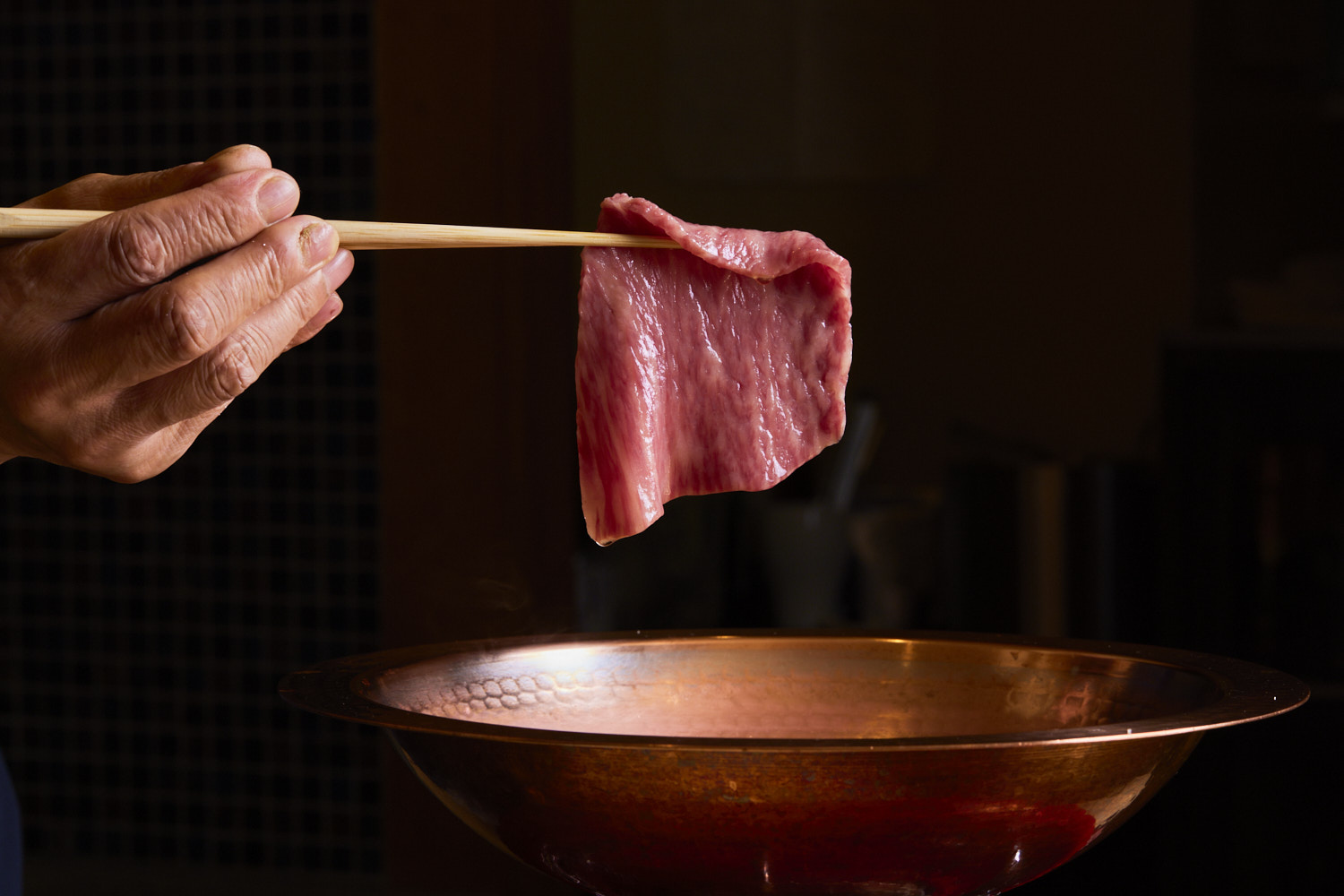
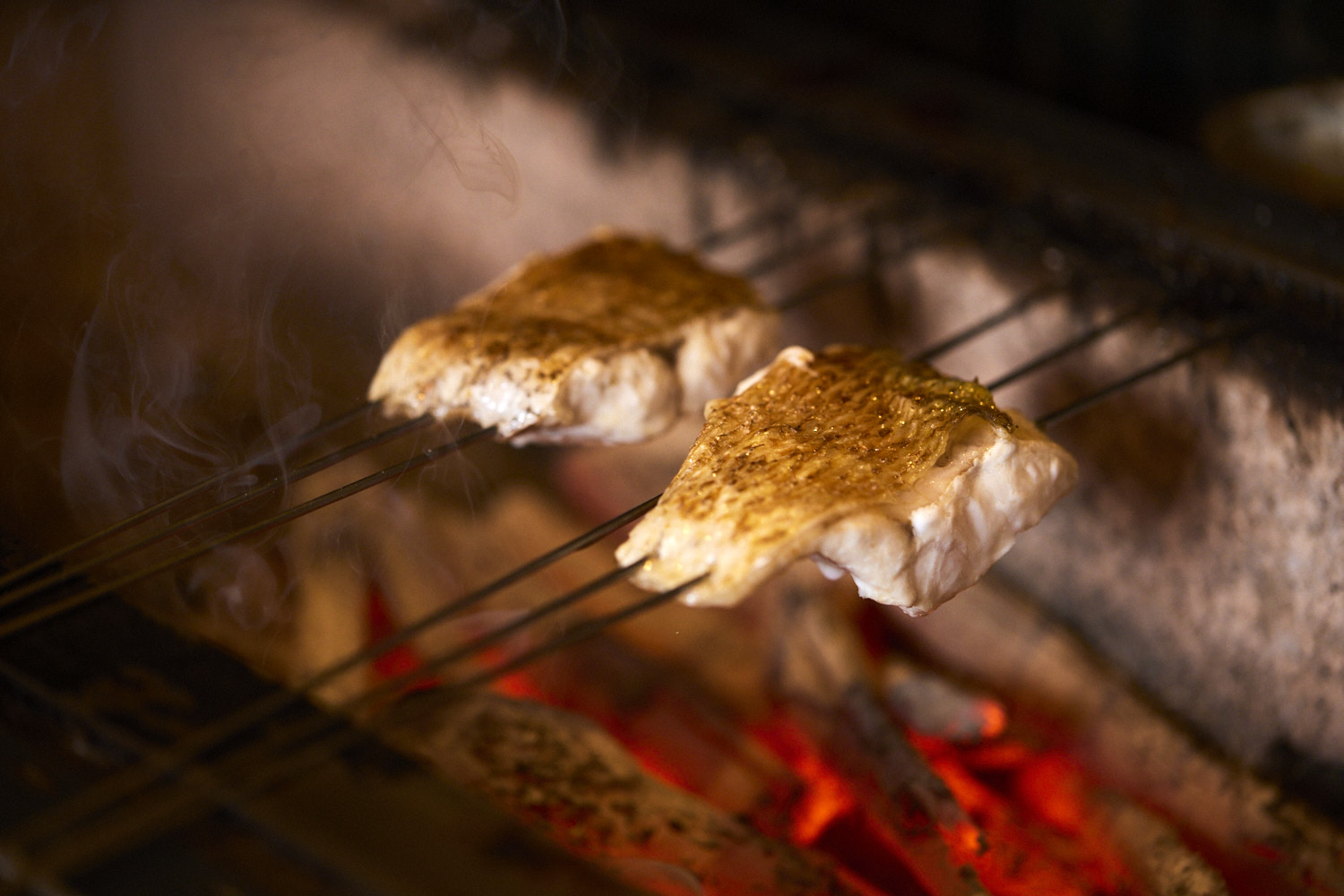
CHEF
Hisama Hirano
SENCHA TEA
The closing act of the meal is entrusted to sommelier Rie Kimura, who meticulously prepares sencha tea for each guest. Adapting traditions of the senchado tea ceremony, she prepares two brews. The first is made with Takedayama spring water, steeped at a temperature just above freezing, creating a thicker liquid with great umami. After sweets are served, she prepares the second brew, made using warmer water heated over the charcoal in a ryoro stove. This brew draws out the tea’s richer note. Both are presented with beautiful teaware, and the graceful manners of traditional Japanese tea service.
Course
- The price includes our booking fee of ¥8,000
- The price includes our booking fee of ¥8,000



